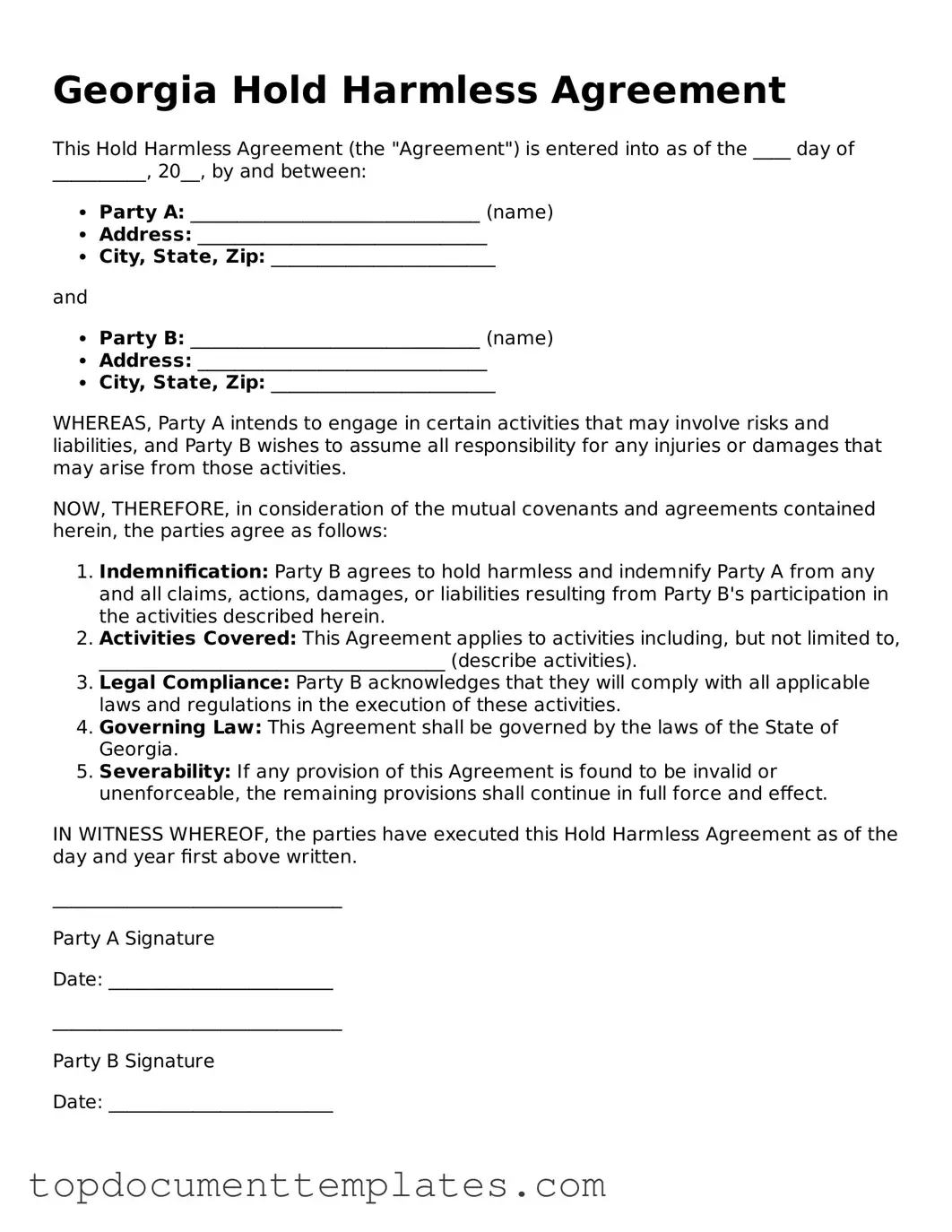Valid Hold Harmless Agreement Form for Georgia State
The Georgia Hold Harmless Agreement is a legal document that protects one party from liability for any damages or injuries that may occur during a specific activity or event. By signing this agreement, individuals or organizations agree to assume responsibility for potential risks and release the other party from legal claims. Understanding this form is essential for anyone looking to engage in activities that involve potential hazards.
To ensure your protection, consider filling out the Hold Harmless Agreement form by clicking the button below.
Open This Form
